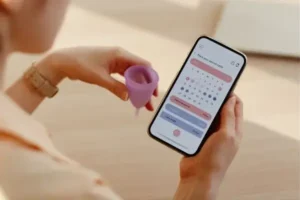How pregnancy ovulation apps work
Discover how pregnancy ovulation apps work, helping women track fertility and ovulation cycles for better pregnancy planning.
How Pregnancy Ovulation Apps Work
Pregnancy planning involves careful timing, and understanding your body’s natural cycles is essential to achieving a healthy pregnancy.
Ovulation apps have become powerful tools in this process, allowing women to track their fertility and ovulation cycles with accuracy.
These apps use a combination of data input from the user and algorithms to predict ovulation windows, menstrual cycles, and even potential pregnancy windows.
We will explore how pregnancy ovulation apps work, their key features, and the benefits they offer to women trying to conceive.
From understanding your cycle to improving the chances of getting pregnant, these apps have revolutionized fertility tracking.
We’ll also discuss how to use them effectively and the science behind ovulation prediction technology.

Pregnancy ovulation apps are designed to help women understand and predict their ovulation cycles.
These apps utilize different data inputs, such as menstrual cycle history, basal body temperature, cervical mucus patterns, and sometimes even advanced data from wearable devices.
By analyzing this information, the app can predict when you are most fertile—when ovulation is most likely to occur—and provide a fertility window.
The fundamental concept behind ovulation tracking is that ovulation happens once a month, typically around the middle of the menstrual cycle.
This is when an egg is released from the ovary, ready for fertilization.
Ovulation apps predict this fertile window, which is usually 4 to 5 days before ovulation and the day of ovulation itself, as this is when conception is most likely to happen.
Data Input
The app will typically ask the user to input their cycle length, the average length of their period, and the start and end dates of their last menstrual cycle.
Some apps may also allow users to log symptoms like changes in cervical mucus, spotting, and mood swings.
Algorithm Predictions
Once the app gathers the necessary data, it uses algorithms based on the data provided to calculate the most likely ovulation date.
Many apps offer predictions for multiple cycles, helping women visualize their fertility window over time.
Tracking Other Symptoms
To improve accuracy, some apps allow users to track other symptoms related to ovulation and pregnancy, such as changes in body temperature, breast tenderness, and even ovulation pain (mittelschmerz).
By collecting more data points, the app can refine its predictions.
Wearable Devices Integration
Some ovulation apps integrate with wearable devices that track basal body temperature or track other physiological data.
These devices can offer real-time data that improves the app’s predictions.
A wearable device can monitor changes in temperature as ovulation approaches, providing an additional layer of accuracy.
Medical Monitoring
While pregnancy ovulation apps are useful tools for tracking menstrual cycles and predicting fertile windows, they should be used alongside professional medical guidance.
These apps rely on algorithms, which can be accurate but may not account for underlying health conditions or irregular cycles.
Medical monitoring offers a more comprehensive approach, providing personalized insights through exams, hormone tests, and ultrasounds.
A doctor can identify fertility issues and recommend treatments that an app cannot, ensuring a more informed and holistic view of reproductive health.
In short, while ovulation apps are valuable tools, medical supervision ensures you receive the expert care necessary for successful pregnancy planning.

Key Features of Pregnancy Ovulation Apps
Many pregnancy ovulation apps share similar functionalities, but some apps offer additional features that set them apart.
Here are the core features that most ovulation apps provide:
1. Ovulation and Fertility Tracking
The primary function of ovulation apps is to track and predict ovulation dates.
Based on the inputted menstrual cycle history and symptoms, the app will forecast the fertility window, letting women know when they’re most likely to get pregnant.
2. Cycle and Period Tracking
Most pregnancy ovulation apps let users track their menstrual cycles, recording the start and end dates, period length, and intensity.
This helps predict future cycles, track irregularities, and keep a record of any unusual menstrual patterns.
3. Basal Body Temperature Monitoring
Basal body temperature (BBT) is an important indicator of ovulation. Many apps allow users to log their BBT daily.
A temperature spike indicates that ovulation has occurred, which is a key sign for tracking fertility.
4. Notifications and Alerts
Many apps send notifications to remind users to input daily data, such as their temperature or menstrual cycle details.
Some apps also send alerts for fertile windows or reminders for pregnancy tests if they’ve missed their period.
5. Pregnancy Test Reminders
After using the app for a while, many apps will allow users to set up reminders to take a pregnancy test after a missed period, based on their predicted ovulation and menstruation cycle.
6. Community and Support
Some apps include community features that allow women to connect with others who are trying to conceive. These features can provide support, share experiences, and give emotional encouragement during the fertility journey.
7. Integration with Health Apps
Advanced ovulation apps may integrate with other health apps, such as fitness trackers, to monitor overall health, exercise, and sleep patterns, which can also influence fertility.
Benefits of Using Pregnancy Ovulation Apps
Using a pregnancy ovulation app offers several benefits, especially for women who are trying to conceive.
By tracking fertility, these apps give women more control over their reproductive health. Here are some of the benefits of using these apps:
Predicting Fertile Windows
One of the core functions of ovulation apps is to predict your fertile window.
This window occurs just before and during ovulation, which is when conception is most likely.
By using the data provided, these apps can give users an estimated window when they are most fertile.
This can help increase the chances of pregnancy.
For those trying to conceive, understanding your fertility window can help plan intercourse to coincide with the best chances of conception.
Improved Cycle Awareness
Fertility apps allow users to track their menstrual cycles in detail.
By monitoring things like the duration of your period, the flow intensity, and other symptoms, these apps can help you understand your cycle better.
This awareness can be especially useful for women with irregular cycles.
It can also help women who want to manage their fertility or plan for a pregnancy in the future.
Reduced Stress in Conception Attempts
Trying to conceive can sometimes feel like an emotional rollercoaster.
One of the most common stressors is the uncertainty surrounding ovulation. Ovulation apps help remove that uncertainty.
With the app predicting ovulation days and the best time for intercourse, it reduces anxiety, allowing for a more relaxed approach to conception.
Convenience and Accessibility
Pregnancy ovulation apps are easily accessible on your smartphone or tablet, meaning you can take them with you wherever you go.
The simplicity and ease of use make it easier for women to track their cycles without needing to keep paper logs or visit the doctor regularly.
These apps can work in the background of your life, providing valuable insights without requiring constant attention.
Personalized Insights
As you use the app over time, it gathers data about your unique cycle.
This data helps the app to provide more accurate predictions and insights tailored to your specific needs.
For example, the app may adjust its predictions based on past cycles and symptoms, offering a more personalized experience.

Does the App Work?
Ovulation apps are typically reliable when used correctly.
The effectiveness of the app depends largely on how consistently you input data.
The more data you provide, the more accurate the predictions will be.
However, it is important to remember that these apps use algorithms based on general patterns.
They are not foolproof and may not work for everyone.
If you’re struggling with irregular cycles, the app may not provide precise predictions, and it may be helpful to consult with a healthcare professional.
Is the App Secure?
When using any app that involves personal data, it’s important to ensure that the app is secure.
Most reputable ovulation apps encrypt your data and protect your privacy.
However, it’s always a good idea to read the privacy policy before using an app to ensure your data won’t be shared or sold without your consent.
How the App Can Help You
Ovulation apps can help you better understand your fertility and provide more accurate predictions for when you are most likely to conceive.
By tracking and analyzing data over time, the app can give you insight into your cycles, fertility, and overall reproductive health.
For those trying to conceive, these apps provide the tools and information needed to plan intercourse during the most fertile days, giving you a better chance of success.
Is It Worth Downloading the App?
If you’re trying to conceive or simply want to understand your body better, downloading a pregnancy ovulation app is worth it.
These apps help you track your cycles, predict your fertility windows, and provide valuable insights into your reproductive health.
With the convenience of using your smartphone, these apps are easy to access and use daily, making it an efficient tool in managing fertility.
Our Opinion
Overall, pregnancy ovulation apps are an excellent tool for tracking fertility and predicting ovulation.
For women who are trying to conceive, these apps provide a reliable, easy-to-use method for understanding fertility windows and improving the chances of pregnancy.
By offering personalized insights and tracking your unique cycle, these apps provide valuable information that can help you achieve your pregnancy goals.





